Topic: DMD0093
COUNTIFxx - Count If (EQ, NE, LT, LE, GT, GE)
This instruction can only be used in the Expression parameter of the Calculate Expression (MATH) instruction.
The Count If (COUNTIFxx) math functions count the number of locations in the specified range that match the specified value by making the comparison in the function name. There are six variants of the CountIf math function, and all six have the following parameters:
Result specifies a location to store the result of the calculation. This can be any writable numeric location or an array reference, e.g. D [V0 ], (the array reference itself can be a math expression, e.g. D [ V0 +16 ]).
The Expression parameter consists of all the text between the bounding parentheses. The parameter list must consist of 2 parameters separated by a comma. Each parameter is an expression which can be a constant value, a bit or numeric memory location, an arithmetic expression, and / or mathematical function or other expressions up to a maximum of 1024 characters. Expressions can be nested, so use of parentheses is recommended to ensure proper evaluation order.
The first parameter specifies the comparison value. This can be any expression parameter, including any constant value, any readable numeric location, any readable bit location, any Math function, or any combination of these with Math operators.
The second parameter specifies the first location in the range of locations to compare against. This can be any readable any numeric or bit data block location, including casts and structure members (fields of heap structures are not supported).
The third parameter specifies the number of contiguous locations that will be compared against. This can be any expression parameter, including any constant value, any readable numeric location, any readable bit location, any Math function, or any combination of these with Math operators.
If the third parameter is 0, the result will be 0, and Argument Out of Range (ST132) will be ON.
If the third parameter exceeds the size of the specified data block, the result will only include the values up through the last location in the block, and Argument Out of Range (ST132) will be ON. For example, assume the block of WX locations has a range of WX0 to WX255. The result of COUNTIFEQ(45, WX250, 10) would only include the values in WX250 through WX255, and Argument Out of Range (ST132) will be ON.
The following are the 6 variants of the COUNTIF math function:
COUNTIFEQ - Count If Equal to Expression
In the example below, D0 will contain the number of locations in the range of D100 through D109 that contain a value that is equal to 45.
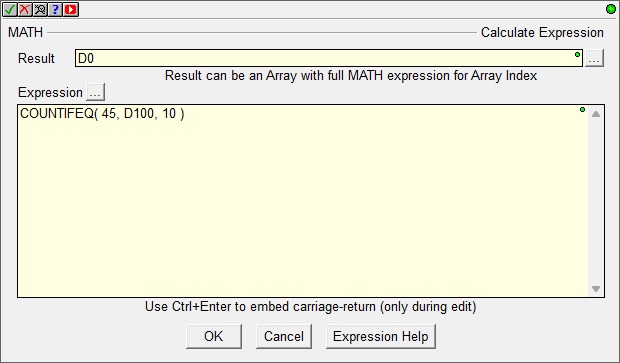
COUNTIFNE - Count If Not Equal to Expression
In the example below, D0 will contain the number of locations in the range of D100 through D109 that contain a value that is not equal to 45.
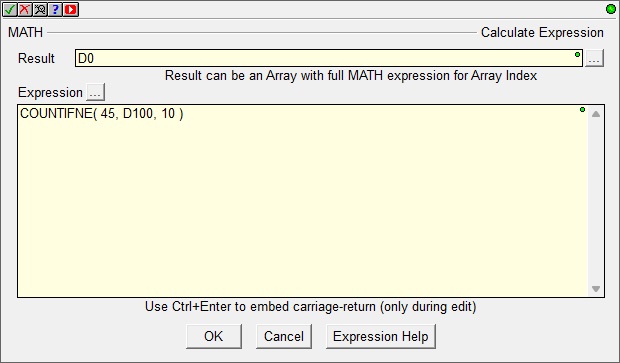
COUNTIFLT - Count If Less Than Expression
In the example below, D0 will contain the number of locations in the range of D100 through D109 that contain a value that is less than 45.
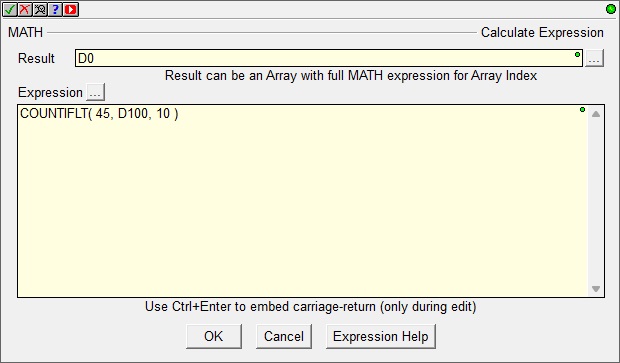
COUNTIFLE - Count If Less Than or Equal to Expression
In the example below, D0 will contain the number of locations in the range of D100 through D109 that contain a value that is less than or equal to 45.
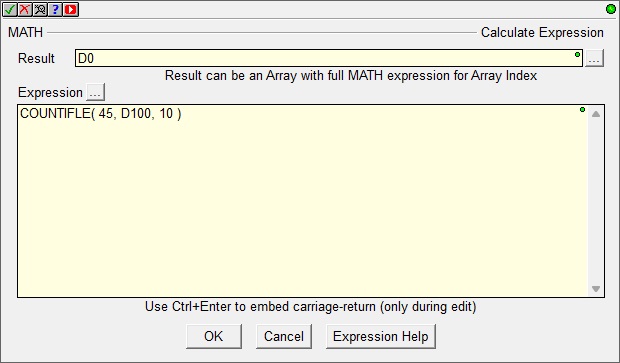
COUNTIFGT - Count If Greater Than Expression
In the example below, D0 will contain the number of locations in the range of D100 through D109 that contain a value that is greater than 45.
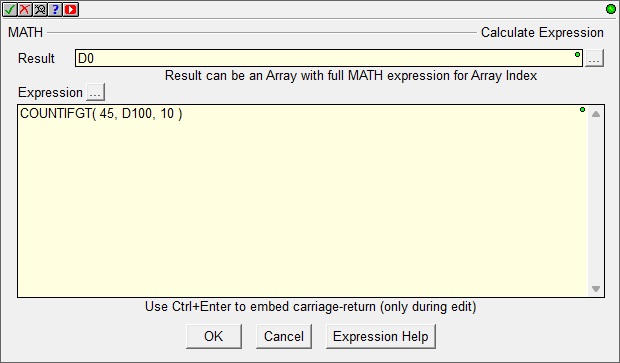
COUNTIFGE - Count If Greater Than or Equal to Expression
In the example below, D0 will contain the number of locations in the range of D100 through D109 that contain a value that is greater than or equal to 45.
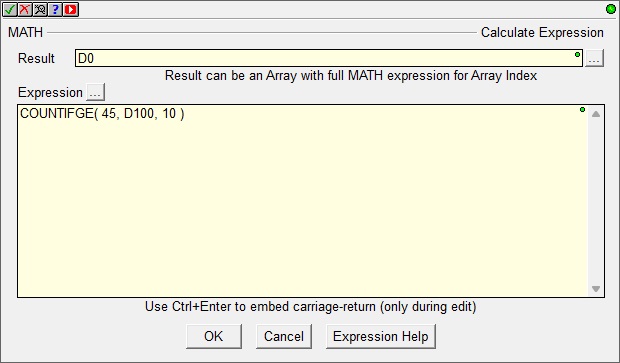
See Also:
SUMIFxx - Sum If (EQ, NE, LT, LE, GT, GE)
COUNTIFxx - Count If (EQ, NE, LT, LE, GT, GE)
Rung Example:
